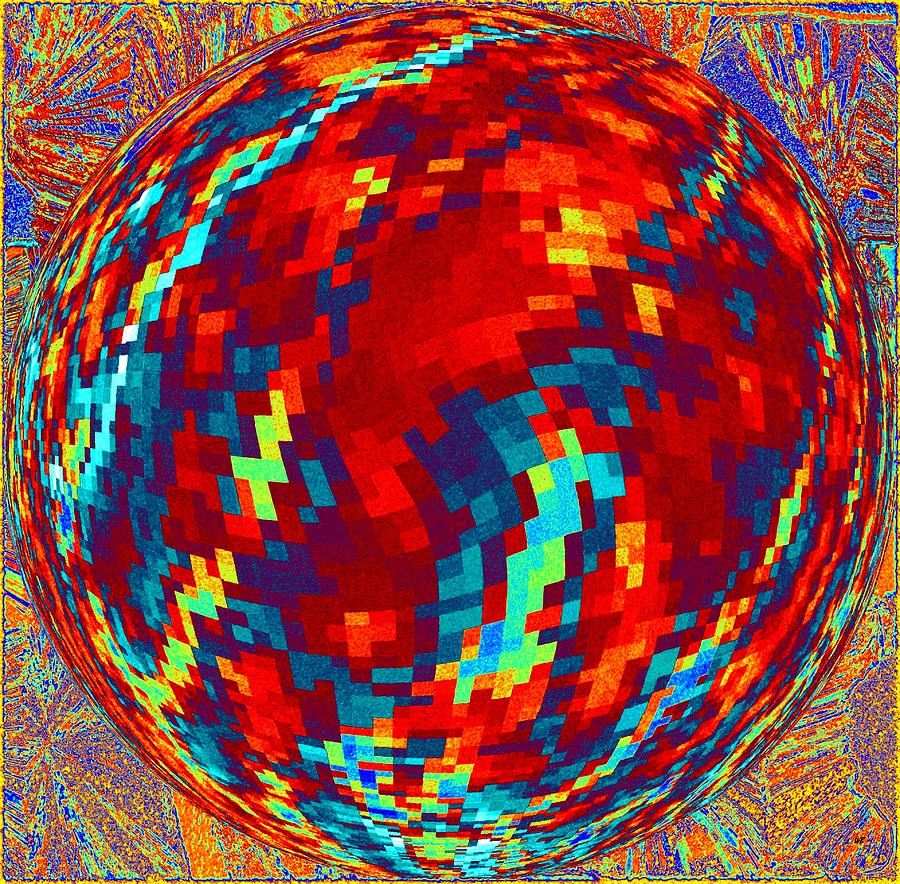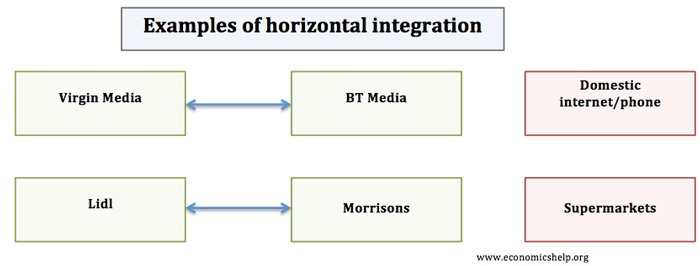In the 1920s, Mondrian began to create the definitive abstract paintings for which he is best known. The simplification of the pictorial elements was essential for Mondrian's creation of a new abstract art, distinct from Cubism and Futurism. The assorted blocks of color and lines of differing width create rhythms that ebb and flow across the surface of the canvas, echoing the varied rhythm of modern life. The composition is asymmetrical, as in all of his mature paintings, with one large dominant block of color, here red, balanced by distribution of the smaller blocks of yellow, blue gray, and white around it. This style has been quoted by many artists and designers in all aspects of culture since the 1920s.
Following the development of his mature Neoplastic style, Mondrian sought to express a more dynamic rhythm in his abstractions. He began producing "lozenge" paintings in order to create a more vibrant tension on the picture plane. His innovation introduced the diagonal line of the canvas edge into his grid of horizontal and vertical lines.
In this particular composition, the lines appear to extend beyond the edges of the canvas as they intersect with the diagonals at varied intervals. This particular example relies upon only four lines of varied thickness, bisecting the gray picture plane in order to express Mondrian's ideal of active balance. By shifting the orientation of the canvas, Mondrian provided an important precedent for the shaped canvases of the Minimalists in the 1960s. With the complete absence of color in this painting, Mondrian has also prefigured the Minimalists' interest in pure form and favoring of gray, white, and other muted colors.
The line art is defined as a form of creative production that exists in various disciplines. Covering both the fine art categories, such as printmaking, drawing, painting, sculpture, it is also an important part of the digital artworks, applied art decorations, and pattern making. The images created are distinctive examples of various forms a line can take. The line can be horizontal, vertical, diagonal, zigzagged, curved, freeform, thick, thin, light or dark. Line art can use different colors, but traditional understanding is that it is usually monochromatic.
Originally, prior to the birth of photography, line art was used in the form of illustrations later applied in print production, using black ink on white paper. The horizon line art theory is a horizontal line that runs across the paper or canvas to represent the viewer s eye level or delineate where the sky meets the ground. A line in art is defined as a point moving in space and it s one of the seven elements of art line color shape form texture value space. Straight or classic lines provide structure to a composition.
They can be oriented to the horizontal, vertical, or diagonal axis of a surface. Straight lines are by nature visually stable, while still giving direction to a composition. InLas Meninas, you can see them in the canvas supports on the left, the wall supports and doorways on the right, and in the background in matrices on the wall spaces between the framed pictures. Moreover, the small horizontal lines created in the stair edges in the background help anchor the entire visual design of the painting. Vertical and horizontal straight lines provide the most stable compositions. Diagonal straight lines are usually more visually dynamic, unstable, and tension-filled.
Horizontal Line Definition In Art While still in Holland during World War I, Mondrian helped found the group of artists and architects called De Stijl, and it was during this period he refined his style of abstraction even further. The blocks of color float on a white ground and no longer reference a physical object in nature such as a tree or building, while all reference to illusionistic depth has been eliminated. The composition is based on color and balance and gives even weight to all areas of the picture surface, moving toward the precise balance of his mature canvases. View Gustave Caillebotte's Paris Street, Rainy Weatherfrom 1877 to see how two-point perspective is used to give an accurate view to an urban scene. The artist's composition, however, is more complex than just his use of perspective. The figures are deliberately placed to direct the viewer's eye from the front right of the picture to the building's front edge on the left, which, like a ship's bow, acts as a cleaver to plunge both sides toward the horizon.
In the midst of this visual recession a lamp post stands firmly in the middle to arrest our gaze from going right out the back of the painting. Caillebotte includes the little metal arm at the top right of the post to direct us again along a horizontal path, now keeping us from traveling off the top of the canvas. As relatively spare as the left side of the work is, the artist crams the right side with hard-edged and organic shapes and forms in a complex play of positive and negative space. Symmetrical balance is the most stable, in a visual sense, and generally conveys a sense of harmonious or aesthetically pleasing proportionality.
I have been attracted to and a fan of pen and ink drawing, and the use of lines for cross-hatching, to visualize textures, shading, depth, and other elements of a 3 dimensional object in a 2 dimensional drawing. My dad was a classic Walt Disney animator and I grew up in a Disney family. Crumb's Zap Comix & Fritz The Cat black & white cartoons, and some Rick Griffin wave and sword-fighting flying eyeball warrior's. Also, Jack Kirby's Marvel Comics characters used motion indicating lines extremely well for action scenes. I am currently working on designing a Mojave Desert southern California design elements set of symbols and stylized art that reflects life here in my SoCal Mojave desert.
Hsve to work on something when I retire after this school year. Thanks for the good information and food for thought and visualizing. The Gray Tree exemplifies Mondrian's early transition toward abstraction, and his application of Cubist principles to represent the landscape. The three-dimensional tree has been reduced to lines and planes using a limited palette of grays and black. This painting is one in a series of works Mondrian created, in which the early trees are naturalistically represented, while the later works have become progressively more abstract.
In the later paintings, the lines of the tree are reduced until the form of the tree is barely discernable and becomes secondary to the overall composition of vertical and horizontal lines. Here, there is still an allusion to the tree as it appears in nature, but one can already see Mondrian's interest in reducing the form to a structured organization of lines. This step was invaluable to Mondrian's development of his mature style of pure abstraction. Lines are marks moving in a space between two points whereby a viewer can visualize the stroke movement, direction, and intention based on how the line is oriented. Lines describe an outline, capable of producing texture according to their length and curve.
There are different types of lines artists may use, including, actual, implied, vertical, horizontal, diagonal and contour lines, which all have different functions. Lines are also situational elements, requiring the viewer to have knowledge of the physical world in order to understand their flexibility, rigidity, synthetic nature, or life. It is considered by most to be the most basic element of art. Multiple diagonal lines create movement toward a vanishing point in the upper right. It is one of the most crucial elements as everything begins with just a simple dot in space that transforms into lines and then drawings. In two-dimensional art, the " picture plane " is the flat surface that the image is created upon, such as paper, canvas, or wood.
This canvas presents the viewer with the culmination in Mondrian's life-long pursuit of conveying the order that underlies the natural world through purely abstract forms on a flat picture plane. Broadening the use of his basic pictorial vocabulary of lines, squares and primary colors, the black grid has been replaced by lines of color interspersed with blocks of solid color. This, and his other late abstract paintings, show a new, revitalized energy that was directly inspired by the vitality of New York City and the tempo of jazz music. In 'Weeping Woman', Picasso combines a synthetic cubism with a stained glass like structure.
Jagged lines, fractured shapes and acid colors set the despairing tone of the work. The desolate woman's tortured emotions are heightened by the artist's careful balance of bold lines, exaggerated color and simplified drawing. Picasso uses strong dark lines to pull the fragmented image together and to subdue the optical shock of opposite colors (red/green, yellow/purple, blue/orange).
Despite this, his heavily laden pigments can still generate enough chromatic intensity to provoke a state of alarm. The woman's eyes are like shattered headlights, pierced by the fractured shards of the handkerchief; her chattering teeth gnawing convulsively on its cloth. These combine in a pale aqueous blue - a dramatic contrast of monochrome against color.
Even the stitching in her jacket weaves a mesh of thorns and all is sharp and angular in this visual definition of despair. Artists use the horizon line to make objects in paintings proportionate and to set the stage for outdoor and landscape paintings. Horizontal lines generally travel from left to right and are relative to the horizon. This results from subconscious association of horizontal position with sleeping retirement or death. The horizon line in a perspective drawing is a horizontal line drawn across the picture.
Symmetry, in which images have a repeated, mirrored aspect, is one of the most intuitive and common types of balance. Image by contributor YAAV.Although balance appears in some prehistoric and early art, the principle of balance was formalized by artists working during the Renaissance period. Leonardo DaVinci was particularly renowned for his striving for balance in paintings like The Last Supper and his famous drawing, Vitruvian Man ("Proportions of the Human Body").
A label applied to a loose group of mostly French artists who positioned themselves outside of the official Salon exhibitions organized by the Académie des Beaux-Arts. They worked out of doors, the better to capture the transient effects of sunlight on the scenes before them. With their increased attention to the shifting patterns of light and color, their brushwork became rapid, broken into separate dabs that better conveyed the fleeting quality of light. Most critics derided their work, especially Claude Monet's Impression, Sunrise , which was called a sketch or impression, rather than a finished painting. From this criticism, they were mockingly labeled Impressionists. They continued exhibiting together until 1886, at which point many of the core artists were taking their work in new directions.
A term describing the abstraction pioneered by the Dutch journal De Stijl , founded in 1917 by the painter and architect Theo van Doesburg. This international group of artists working in all mediums renounced naturalistic representation in favor of a stripped-down formal vocabulary principally consisting of straight lines, rectangular planes, and primary color. In a response to the devastation wreaked by World War I, de Stijl artists aimed to achieve a visual harmony in art that could provide a blueprint for restoring order and balance to everyday life. Think about color as the result of light reflecting off a surface. Understood in this way, color can be represented as a ratio of amounts of primary color mixed together.
Color is produced when parts of the external light source's spectrum are absorbed by the material and not reflected back to the viewer's eye. The chemical composition of the paint allows all of the colors in the spectrum to be absorbed except blue, which is reflected from the paint's surface. Common applications of subtractive color theory are used in the visual arts, color printing and processing photographic positives and negatives. Implied lines are those created by visually connecting two or more areas together. The gaze to the Infanta Margarita—the blonde central figure in the composition—from the meninas, or maids of honor, to the left and right of her, are implied lines. Implied lines can also be created when two areas of different colors or tones come together.
Implied lines are found in three-dimensional artworks, too. The sculpture sets implied lines in motion as the figures writhe in agony against the snakes. Four-point perspective is the curvilinear variant of two-point perspective. The resulting elongated frame can be used both horizontally and vertically. Like all other foreshortened variants of perspective, four-point perspective starts off with a horizon line, followed by four equally spaced vanishing points to delineate four vertical lines.
Because vanishing points exist only when parallel lines are present in the scene, a perspective with no vanishing points ("zero-point") occurs if the viewer is observing a non-rectilinear scene. The most common example of a nonlinear scene is a natural scene (e.g., a mountain range), which frequently does not contain any parallel lines. A perspective without vanishing points can still create a sense of depth.
In art, perspective is an approximate representation on a flat surface of an image as it is seen by the eye, calculated by assuming a particular vanishing point . Systematic attempts to evolve a system of perspective are usually considered to have begun around the 5th century BCE in the art of Ancient Greece. By the later periods of antiquity , artists—especially those in less popular traditions—were well aware that distant objects could be shown smaller than those close at hand for increased illusionism. But whether this convention was actually used in a work depended on many factors.
Some of the paintings found in the ruins of Pompeii show a remarkable realism and perspective for their time. In a visual composition , pattern and rhythm are generally expressed by showing consistency with colors or lines . For instance, placing a red spiral at the bottom left and top right, for example, will cause the eye to move from one spiral, to the other, and then to the space in between.
The repetition of elements creates movement of the viewer 's eye and can, therefore, make the artwork feel active. Hilma af Klint's Svanen exemplifies the visual representation of rhythm using color and symmetry. The principles of visual art are the rules, tools, and guidelines that artists use to organize the elements of in a piece of artwork.
When the principles and elements are successfully combined, they aid in creating an aesthetically pleasing or interesting work of art. While there is some variation among them, movement, unity, harmony, variety, balance, rhythm, emphasis, contrast , proportion, and pattern are commonly sited as principles of art. Mondrian saw Neo-plasticism as an ideal art in which the basic elements of painting were used in their purest and most fundamental state. Only primary colours, non-colours, squares, rectangles, straight, horizontal and vertical lines were used. Until his split from De Stijl in 1923, Neo-plasticism also applied to the work of other artists in De Stijl. An international, middle-class artistic movement of the late 19th and early 20th centuries that emphasized the unity of the arts and sought to reflect the intensive psychic and sensory stimuli of the modern city.
Although it influenced painting and sculpture, the movement's chief manifestations were in design, performance art, and architecture. Variants in cities throughout Europe and the US accrued labels such as Arte Nova, Glasgow Style, Stile Liberty, and Arte Modernista. The version commonly referred to as Art Nouveau flourished in France and Belgium and was characterized by sinuous, asymmetrical lines based on organic forms. Its more rectilinear counterpart, called Jugendstil or Secession style, flourished concurrently in Germany and Central Europe. These ranged from abstract "automatic" drawings to hyper-realistic painted scenes inspired by dreams and nightmares to uncanny combinations of materials and objects. All receding edges of the buildings in this one point perspective photo angle towards the single vanishing point.
The position of the vanishing point tells us that the photographer was crouching down, with his eye level lowered.It is possible to draw over photographs to identify vanishing points, horizon lines and true shapes. Studying the work of famous artists can also help you gain an understanding of one point perspective, as shown in the example by Vincent van Gogh below. So far we have offered to you examples of how a line is used to create abstract works.
Susan Hauptman presented before us images that showcased a great technical skill and a softness of her rendering of her self-portraits. The interplay of a variety of questions such as gender stereotypes, identity, and understanding of the human body were all reflected and presented in the traditional drawing technique. The black and white paintings by the English painter Bridget Riley play with the perception of our eye and follow the tradition of the Op art period. They represent a variety of geometrical forms that produce a sensation of movement. During 1961 to 1964 the painter worked with the contrast of black and white, occasionally introducing tonal scales of gray.
Here, the lines are produced not with the use of pen and paper, ink or a plate, but on canvas and with paint and in a variety of its thickness and color. The famous Renaissance painter Leonardo da Vinci was above all an inventor pushed on by his inquisitive mind and a desire to learn more and understand the entire world around him. His detailed anatomical line drawings may not be so accurate concerning what we have learned about the human body but are the most beautiful examples of the traditional form of drawing. The pencil sketches showcase the mastery and the precise guidance of the hand. The dark sections that are build with the use of lines display the way in which lines of different directions can be employed to produce a contrast between light and dark areas on the paper without the help of dark colors.






























No comments:
Post a Comment
Note: Only a member of this blog may post a comment.